Grow lights
Does the type of light you use matter for starting seedlings indoors? We removed some standard fluorescent tube lights (T12) from our kitchen a couple of years ago during a remodel and I could easily set these up as grow lights. Will these work or do I need to get specific grow lights? The location I have in mind for the seedlings unfortunately won't have a lot of natural light.
Comments (45)
brandon7 TN_zone7
10 years agolast modified: 9 years agoThe type of fluorescent bulbs definitely matters. The good news is that the right cheap bulbs will work very nearly as well (if not just as well) as the expensive fluorescent grow lights! I use 4100K or 5000K bulbs in my seedling bench lights. They produce useable light at about the same wavelength as the useable light you'd get from sunlight. I'll leave off the complicated explanation, but it turns out that your plants will see these bulbs just about the same way they would sunshine. The amount of light also matters. The amount of light that the plant receives will depend, among other things, on the wattage and proximity of the bulbs to the plants. On a 18" x 36" shelf, I use a total of six T-12 bulbs and place them within 4" - 8" of the plants (closer once the plants grow a little).
mandolls
10 years agolast modified: 9 years agoShort answer - yes you can use them. If you are just growing seedlings, not trying to grow to fruit or flower, pretty much any bulbs will work for most plants. Most people use 4 bulbs per shelf of 4 standard trays.
Related Professionals
New Bedford Landscape Architects & Landscape Designers · Manhattan Beach Landscape Architects & Landscape Designers · Richmond Heights Landscape Architects & Landscape Designers · Summit Landscape Architects & Landscape Designers · Amesbury Landscape Contractors · Brookfield Landscape Contractors · La Vista Landscape Contractors · Manhattan Landscape Contractors · Tinton Falls Landscape Contractors · South Orange Carpenters · Canoga Park Fence Contractors · Leander Fence Contractors · Mount Pleasant Fence Contractors · San Mateo Fence Contractors · Savage Fence Contractorsdigdirt2
10 years agolast modified: 9 years agoHere is a link to the FAQ here on your question. It reiterates what mandolls said above. It is high intensity not spectrum that matters with seedlings. Old bulbs will have reduced intensity as they fade with time.
Dave
Here is a link that might be useful: Lighting FAQ
brandon7 TN_zone7
10 years agolast modified: 9 years agoSpectrum absolutely matters with seedlings. Once the seedlings start producing their own food, their performance can vary considerably with the spectrum of light they receive. Anyone who has grown plants under lights and played around with spectrum will have no doubt about that. Longer wavelength (red / lower degrees K) light produces plants with weak and lanky growth. Somewhat longer frequencies can be beneficial to promote flowering (when that is important), but below 4100K (wavelength longer than 730nm), very little light is absorbed by chlorophyll and growth is significantly impacted. Bulbs that put out shorter wavelength (blue / higher degrees K) light, require more bulbs and more power per amount of light produced. If you use bulbs that put out much more than 5000K, you'll need lots more bulbs and a fatter extension cord / wallet. If all you are doing is getting seeds to sprout, then use whatever light you want. If you plan on growing the plants under lights for any time, use a light that will result in healthy plants.
This post was edited by brandon7 on Sat, Feb 22, 14 at 22:16
brandon7 TN_zone7
10 years agolast modified: 9 years agoBTW, if you really examine Digdirt's post, you'll find it contradicts itself. Using higher frequency bulbs has a marked impact on light intensity yet Digdirt says spectrum (frequency) doesn't matter but intensity does.
Also, the info in the link he provided is a little misleading, IMO. I think what the author was trying to say is that the expensive (broad-spectrum) grow lights were not necessary (which is absolutely true), but I also think that didn't come across very clearly.
rusty_blackhaw
10 years agolast modified: 9 years agoThe problem of lankiness of seedlings is exacerbated by 1) growing on seedlings too long indoors, and 2) overly warm temperatures after germination.
If you don't try and grow large plants under limited light at temps greater than the mid-60s or so, then many different types of indoor lights (including cheap shoplights) will be effective.
digdirt2
10 years agolast modified: 9 years agoBTW, if you really examine Digdirt's post, you'll find it contradicts itself. Using higher frequency bulbs has a marked impact on light intensity yet Digdirt says spectrum (frequency) doesn't matter but intensity does.
Not sure what you see in my post above that contradicts itself. My point about intensity was referencing the freshness and the number of bulbs used, not the rating of the bulbs used.
I'm in the nursery business and and have been for over 50 years. We grow 1000s of garden transplants for sale annually in our greenhouses and covered annexes and for the majority of garden transplants the spectrum delivered by standard T-12 and T8 bulbs, works just fine and for a reasonable cost..
Sure we also have metal halide and HPS fixtures used for certain plants but the average home spare-room grower sure doesn't need to invest in anything that expensive to grow their garden transplants.
Shop lights are well proven by thousands of home growers to be more than adequate when it comes to producing very adequate flower and vegetable garden transplants.
This is not to say that one should not invest in much more expensive equipment that is far more spectrum-oriented if they wish OR if they growing established plants indoors - a totally different issue - rather than just seedlings that will be transplanted outside. Just that it isn't required for any reason for garden seedlings.
The choice is yours to make.
Dave
PS: and Eric is quite correct that "The problem of lankiness of seedlings is exacerbated by 1) growing on seedlings too long indoors, and 2) overly warm temperatures after germination."
brandon7 TN_zone7
10 years agolast modified: 9 years agoDave, maybe you mean that a broad spectrum isn't necessary and you were basically seconding what I has said earlier? I took your sentence literally, and when you say that spectrum doesn't matter, that is incorrect (if spectrum includes frequency of light).
brandon7 TN_zone7
10 years agolast modified: 9 years ago"Spectrum normally refers to the color band of the light."
Actually, the spectrum of a light source refers to the distribution of electromagnetic waves over a range of visible or near-visible frequencies. Typical homeowner-type fluorescent bulbs are rated by the frequency/wavelength of the most intense light they produce. They actually produce light of other frequencies, but it is of a lower intensity than that peak. Values are normally given in degrees Kelvin.
The more expensive fluorescent light bulbs (fluorescent "grow lights") often try to spread the light they give off over a larger range of frequencies/wavelengths. The higher (blue) frequency light they give off is for plant growth, and the lower (red) frequency light is for encouraging blooms. In growing seedlings, this red light is unnecessary.
"It is the amount of light, the intensity of that light, that is important, not the color spectrum."
Plants grow by producing food using chlorophyll. With chlorophyll, the plant is able to take nutrients from the soil and convert those nutrients to energy using light. BUT, chlorophyll is only able to use a certain range of light. Light waves outside of that range do not result in the production of energy, and therefore the plant cannot continue to grow.
Many commonly available fluorescent light bulbs fall below the range at which chlorophyll is able to efficiently use the light (the light is too "red"). Even though lots of actual light (lumens) may be present, the chlorophyll cannot use it and the plant will not grow. So far as chlorophyll is concerned, most of the light is unavailable. Any growth under these conditions will be from whatever very small amount of light falls within the necessary range and from energy previously stored by the plant. Effectively, the plant is starving and lanky growth is the result of the plant trying to survive (and find useable light).
With bulbs on the high (blue) side, there is another problem. The light produced by these fluorescent bulbs is perfectly useable by the plant to produce food and grow, but the actual amount of light is very low. Fluorescent bulbs that produce higher frequency light are not nearly as efficient. They take a lot more power and are still not able to supply nearly the amount (lumens) of light produced by the lower frequency bulbs. Using a moderate amount of these bulbs may also result in a starving plant. The food sources may be there, but they are in insufficient amounts (the level of light is too low because of the type of bulb).
"You can successfully grow seedlings under any form of supplemental lighting."
As we've seen above, without proper lighting, the plant's chlorophyll doesn't produce food. Without food, plants die.
"So for most folks the least expensive - shoplight fluorescents - work just fine."
Shop fluorescents with the correct bulbs work fine. But, bulbs that supply more red-end light may not produce nearly enough usable light for plants to grow. Bulbs that produce more blue-end light may not produce enough quantity of light for plants to grow. Bulbs in the 4100K to 5000K work well. Higher frequency bulbs (eg 6500K) will work, but will require more bulbs and more power to produce the same amount of light.
digdirt2
10 years agolast modified: 9 years agoBrandon - I guess you and I and all the growers successfully using shop lights with common fluorescent bulbs will just have to agree to disagree.
While from a highly technical point of view most of what you said above is correct. I took no issue with your original post. It is just that it is far more technical and detailed than the average home seedling grower is interested in getting. And it can quickly also become cost prohibitive.
While it is detail of interest to those on the Growing Under Lights forum, they aren't growing some common garden transplants or have chosen to invest in a much more complex and expensive system for their plants as they are growing beyong the seedling/transplant stage. That is their choice.
But many garden plant growers don't even want to use lights, just a window sill. So those who are interested in light set-ups want to know if they can buy some shop lights and put some bulbs in them and grow seedlings and the answer is yes they can and do. They don't need, as the OP asked, "special grow lights".
The majority of the common 4' fluorescent bulbs sold in the big box stores today fall within the daylight white/blue part of the spectrum, not the red/yellow bottom of the scale. Some use a combo of 2 different types oc cool and warm in their fixtures with very good results.
But bottom line - the choice is yours.
Dave
brandon7 TN_zone7
10 years agolast modified: 9 years ago"your original post...is far more technical and detailed than the average home seedling grower is interested in getting."
Dave, I don't see how the suggestion to use 4100K or 5000K fluorescent lights is technical or very detailed. If someone is going to buy light bulbs and finds that too technical, they may not make it through the checkout line at the big box store anyway.
My last post was more technical, because you didn't seem to understand what I said, and I was hoping that by elaborating a little, you'd see my point.
"And it can quickly also become cost prohibitive."
My suggestion doesn't cost one cent more than yours. 4100K or 5000K bulbs are the same price as the 3000k or 6500K bulbs (at least at the places I shop). Electric costs would even be less with my recommendation compared to the 6500K bulbs that would require more energy to supply the same amount of light.
Honestly, I kind of wonder if you've been really reading what I've written.
"Some use a combo of 2 different types oc cool and warm in their fixtures with very good results.
All, or most all, of the "experts" over in the Growing Under Lights Forum frequently suggest that purposefully using two different types of lights like that is useless (even if you are also trying to promote flowering). I used to question their advise about that because I had never really set down and looked at the numbers. Because there is a variety of suggestions between the 4100K, 5000K, and even 6500K bulbs, it seemed reasonable to mix the bulbs and take a happy/medium approach. Well, after actually doing a little research, it turns out they are correct. Mixing the bulbs doesn't really help. It changes the amount of useable light very little. But, as long as you are using 4100K and higher bulbs, it also doesn't really hurt.
Marshallkey
10 years agolast modified: 9 years agoI've used standard florescent bulbs for 30 yrs for starting seed . Just keep them a couple inches from your plants, water when needed and keep and oscillating fan on them 12 hrs a day after they are about a week old and you will do fine ! Too much water is not good. A lot of the advice you get on here is just people who think they are smarter than what they are and want to overwhelm you all kinds of mumbo jumbo ! It's not that complicated , Enjoy !
brandon7 TN_zone7
10 years agolast modified: 9 years agoMarshallkey, just for clarification, who have you seen recommend against "standard florescent bulbs" or talk in "mumbo jumbo"? I don't think Dave was doing either, and I know I wasn't. Maybe you were talking about other conversations on this site, but If there was something in this particular thread that you weren't able to understand, just ask!
This post was edited by brandon7 on Thu, Feb 27, 14 at 10:52
albert_135 39.17°N 119.76°W 4695ft.
10 years agolast modified: 9 years agoWhen I studied this many decades ago at university we were taught that that the red end of the 'grow light' spectrum was very short lived and that any benefit was soon lost. Is that still an idea circulating amongst the pros and cons of shop light vs. grow light?
brandon7 TN_zone7
10 years agolast modified: 9 years agoThat's hard to address, Albert, because of the possible different meanings of some of the words in your question. The term 'grow light', especially, could cover a lot of different options.
If we narrow the conversation down to only fluorescent bulbs (standard type fluorescent bulbs v. grow-light type fluorescent bulbs) the difference is that the standard type bulbs have a narrower band of peak output. The broader range might be slightly more advantageous for growing flowering plants for long periods of time. The lower (red) wavelengths trigger flowering, while the higher (blue wavelengths supply more efficient light for chlorophyll energy production (better for growth).
_________________________________________A general note about my use of 'standard fluorescent bulb':
There really is no such thing as a standard fluorescent bulb or a standard fluorescent fixture. I used the term to cover all the more typically available bulbs for homeowner use. I hope most people will get the idea, but, with the way some of the conversation above went, I'm not sure everyone is on the same page.SouthCountryGuy Zone 4b-5 SE BC
10 years agolast modified: 9 years agoWhile I can somewhat agree that the spectrum, as humans see it, is important, the most important aspect of light is the PAR (Photosynthetically Available Radiation). Plants see much differently than we do..
lumens and color spectrum are a human trait that green plants don't particularly pay attention to.
Have fun.
SCG
brandon7 TN_zone7
10 years agolast modified: 9 years agoPAR is a technical sounding phrase for the light in the wavelength range I've been talking about (from around 4200K to 7500K). It's just a "fancy" way to refer to light, available for photosynthesis. It's nothing magic or special, and I hope it doesn't confuse the hobbyist looking to purchase fluorescent bulbs for growing seedling. Lumens and frequency/wavelength, expressed in degrees K, are probably a more practical way for the hobbyist to evaluate available bulbs.
This post was edited by brandon7 on Sat, Mar 1, 14 at 3:15
brandon7 TN_zone7
10 years agolast modified: 9 years agoOn second thought, maybe PAR can be even more useful here. It shows us that it's definitely not just the intensity of light that matters. Measurements of PAR show us how much light is available in the necessary frequency/wavelength range. Lumens express total amount of visible light, not just the amount of light in the relevant frequency/wavelength range. So, maybe introducing the technical word for what I was describing can help to verify it's factualness and importance.
Thanks for bringing that up, SCG! Now I wished I had thought to do it earlier. Maybe it would have helped with the explanation.
This post was edited by brandon7 on Sat, Mar 1, 14 at 3:20
alameda/zone 8/East Texas
10 years agolast modified: 9 years agoI am a hobby grower and just bought a 2' light that I am going to hang above some pepper and daylily seeds I am going to plant. Lowe's did not have any plant or terrarium lights and it seems I recall reading that two different lights could be used. All they had in the 2' lights were bright and cool so got one of each. Will this work? I plan to put the seedlings out in the greenhouse where they will get natural light when they sprout so they wont be under this light setup for a great length of time. Are these lights OK or should I look for something else that would work better. They are T-8. Thanks!
Judithbrandon7 TN_zone7
10 years agolast modified: 9 years agoHey Judith, did you read the conversations above? I think all the answers to your questions were already given, but, if not, can you be more specific?
To briefly summarize the answers...
"plant or terrarium lights" - They aren't needed and probably have little if any advantage for growing seedlings.
"bright and cool" - Frequency/wavelength (measured in degrees K and clearly shown on packaging) is important. From the wording (bright and cool), it sounds likely that they would be OK, but we can't be for sure without the specifics.
"so got one of each" - We don't really know what you got, but mixing bulbs doesn't usually present much benefit (or cause harm).
"Are these lights OK" - That would also depend on how much area you were trying to cover. One T-8 light would only cover a very small area.
alameda/zone 8/East Texas
10 years agolast modified: 9 years agoHi Brandon, thanks for answering. Here is what I have:
1 GE F17 T8 Bright White - 3500K [1325 lumens]. 1 GE F17 T8 Cool White - 410K - [1325 lumens]. This size will fit over one flat - I have a heat mat also. I just want to play with this - get some seeds started - and have fun growing them. Once they germinate and look ready for some sunlight, I have several excellent places for them. I want to germinate a few tomatoes, some peppers and some annual flower seeds as well as my daylilies.I did read the posts above and thought I was fine with these - but wasn't totally sure, which is why I thought I had better get you experts to clarify. Thanks a lot!
Judithbrandon7 TN_zone7
10 years agolast modified: 9 years agoMost of the light produced by the 3500K bulb will not be useable by the plants. I would take that bulb back (if you can) and exchange it for either another 4100K or higher bulb. 4100K is around the very lower end of what plants can efficiently use for photosynthesis. The only reason not to go with the highest K value possible, is because those bulbs put out less light per given amount of power. I think 4100K or 5000K bulbs work best. 6500K bulbs put out excellent quality light, but just not as much light as the lower frequency (lower K, more red) ones.
alameda/zone 8/East Texas
10 years agolast modified: 9 years agoLowe's is very good about exchanging - I will return the one bulb. They didn't have a good selection of 2' bulbs - just the cool and bright ones. Thanks!
Judithmori1
10 years agolast modified: 9 years agoalameda,
I have the 2' shop lights. I use the T8 office work space and garage light in mine. I would also check out some of Digdirt posts for set up. IMO Brandon7 has the science but Digdirt has the know how. I started growing seed indoor about 5 years ago and his posts really helped. Also look at growing under lights forum for more advice. Good luck.
brandon7 TN_zone7
10 years agolast modified: 9 years agoYeah, I've only been doing this stuff for about 15 years, and there's only so much practical information you get from being on the advisory board of a couple of different arboretums and working with a half dozen or so horticultural groups. But, I'm leaning!
Jonathan29
10 years agolast modified: 9 years agoThis has been covered well i see. Might as well give my 2 cents though lol. I find that spectrum or wave length has not changed the growth of my plants very much on CFL bulbs i have both a 2700k 200watt and a 5600k 200watt and they both produced beautiful plants not leggy or weak in any way. I did find however that the more expensive lights to run my 2 150 watt HPS lamps that i have give the best results for growing under for long periods of time. They have a very red light probably in the 3500k spectrum area. but they give great growth for my over wintering camellia seedlings. Now if you are starting seeds i would tell you to go with the CFL t5's or these are the best.
http://www.1000bulbs.com/product/1573/FC200-FEIIB200W.html?utm_source=SmartFeedGoogleBase&utm_medium=Shopping&utm_term=FC200-FEIIB200W&utm_content=5000K+Compact+Fluorescent+Grow+Bulbs&utm_campaign=SmartFeedGoogleBaseShopping&gclid=CJ6Z4Yzq9bwCFY17fgodkT4AgQHere is a link that might be useful: 1000bulbs.com
mori1
10 years agolast modified: 9 years agobrandon7,
No disrespect as I like to tell people. What works great in the lab doesn't always translate well in the real world. Lab=controlled settings, Real world not so much. All the science in the world will not help a person just trying to put together a simple set up. Digdirt gets that and puts it in a way that anyone will understand.This post was edited by mori1 on Mon, Mar 3, 14 at 20:09
brandon7 TN_zone7
10 years agolast modified: 9 years ago"No disrespect as I like to tell people."
And the same here. Please don't consider my response "personal", and I realize you're not trying to "take sides" or dispute what anyone has said. I do however have thoughts about your comments.
"What works great in the lab doesn't always translate well in the real world."
Well, there are two things about that....
First, if the controls for the lab experiment are set up correctly to represent the same situation presented by the "real world", then the results should be the same. Physics and chemistry do not change inside the lab.
Second, my information (although it was somewhat simplified for this thread) is pretty much universally accepted throughout the horticultural industry. What I presented wasn't some theoretical result of science fair project from my basement.
"All the science in the world is not help(ful to) a person just trying to put together a simple set up."
I couldn't disagree more! Without science, the person wouldn't be able to buy lights. There would be no lights (except maybe for a stick dipped in tar and lit by a fire started with a couple of rocks). There would be no electricity to run the lights, even if there were electrical lights. Also, there would be no plastic for the trays or pots. The grower would not even know what species of plant they were growing. Without science we'd basically still probably be living in caves.
One way to look at science is to consider it logic and reason applied to trial and observation. If one is unwilling to consider logic and reason or is unwilling to accept repeatable observations and well-reviewed conclusion there is little basis to do much of anything!
mori1
10 years agolast modified: 9 years agoFor the horticulture industry, your knowledge is needed. For the home based simple set up, its too much. You don't need a 10lb bag of potting soil to repot a quart size plant, its just over kill.
"Without science, the person wouldn't be able to buy lights, would be no plastic for the trays or pots."
Going to the extremes are we
"Without science we'd basically still probably be living in caves."
And yet we manage to get out of the caves without it.
I'm not saying we don't need science because we do for the most part. However, what most people want is just the basics. For those with more elaborate set up then splutter away, your in-depth knowledge is what they are looking for.
cugal
10 years agolast modified: 9 years ago[Seinfeld] Yadda yadda yadda [Seinfeld] I'm going with Dave's 50 years of tried & true....... Guess I'm old school here.... If it ain't broke, don't fix it! All the scientific delving into light spectrum/intensity is a wonderful thing, but as a hobbyist trying to learn the basics of vegetable/flower propagation, I'm very grateful for the advice Dave so freely offers!
brandon7 TN_zone7
10 years agolast modified: 9 years ago"However, what most people want is just the basics."
And that is exactly what I gave to start with! Apparently it wasn't enough for some.
This post was edited by brandon7 on Mon, Mar 3, 14 at 15:18
mori1
10 years agolast modified: 9 years agoLOL, THANK YOU cugal.
That's exactly what I've been trying to say brandon7 for how many post now? Good grief
brandon7 TN_zone7
10 years agolast modified: 9 years agoSorry Mori, I really misread your post (in a couple of different places). When I went back and re-read it, I felt like hitting myself upside the head.
Every once in a while, I miss the forest while looking at the trees, and then walk right into the side of one of them!
cugal
10 years agolast modified: 9 years agoYou're very welcome mori1! It's that fresh Kansas air that perpetuates like thinking...... Ha, ha, ha..........
Treebeard
10 years agolast modified: 9 years agobrandon7, I basically understand what you're saying about the 5000k producing more lumens (than 6500k) with less power, but I'm curious if there is a difference in how many of those lumens are available to plants at 5000k vs 6500k (in "standard fluorescent bulbs"). I suppose it depends upon the specific lamp to know this, though...
Okay, a couple more practical questions. I just bought 30 4' T8 6500K bulbs for $84: 2750 lumens (85.93 lm/W), CRI: 82, average life: 30000 hrs. For $115, I could get 5000K bulbs: 2850 lumens (89.06 lm/W), CRI: 85, average life: 24000 hrs. Is the 100 lm (or 400 lm--100 lm x 4 lamps) even significant? Given the lower cost and longer avg life of the 6500s, wouldn't things even out?
Also, I'm wondering if reflectors on shoplights generally make a difference, e.g., an $11 lamp without vs a $17 lamp with.
These price differences aren't that much, but I'm planning on buying a significant amount of stuff, so things add up. I do, however, want to give myself the best chance of success. (I'm using two 24" x 48" white shelving units, one next to a southern-facing window, the other next to a norther-facing window.)
brandon7 TN_zone7
10 years agolast modified: 9 years agoGood observations, Earthlark! There definitely would be differences in the percentage of light that was usable, especially because plants' ability to use light of different wavelengths is not linear. To really evaluate the situation, you'd have to do some fancy calculations (there are a couple of different ways to do it, but both are beyond easy explanation here). If you look at the light output v. wavelength graph of a typical florescent bulb you'll see that there is a peak that tapers off on both sides but it's not a simple bell-shaped curve. The graph of light that is usable to a plant is a little more complex and will actually include multiple peaks resulting from multiple chlorophyll structures. You'd have to combine these graphs to get an idea of exactly what was going on.
As to the 100 lumen difference in the different lights, I wouldn't worry about it for that difference in price. If you were buying lights for a large facility, it might be worth lots of evaluations. In the case of a simple seed bench, as long as most of the light from the bulbs you choose is usable by the plants (which in the case of a 6500K bulb, it is), the difference isn't going to be great. The bigger problem (as far as fluorescent bulbs go) is mostly on the lower wavelength end.
Yes reflectors can make a big difference. It's been a while since I was fixture shopping, but the last fixtures I got had economy-grade reflectors and were actually a little cheaper than the ones without reflectors, from the best I can remember. The economy-grade reflectors weren't quite as efficient, but their small size allowed me to add another fixture for each shelf, which gave me even more light and better plant performance.
susanzone5 (NY)
10 years agolast modified: 9 years agoI've used shop lights, each with one cool white bulb and one full spectrum daylight bulb held one inch above plants, successfully for forty years. It's not rocket science. I don't use gro-lights or deal with lumens. My garden is gorgeous.
brandon7 TN_zone7
10 years agolast modified: 9 years agoIn other words, you stumbled into doing the right thing without even knowing it! It's great when that happens, but it's also good to actually understand how things work and possibly avoid mistakes and delays. Understanding enough about wavelength (expressed in degrees K) and amount of light (lumens) is so simple and easy, that it would be a shame not to spend the miniscule amount of effort to know that you were doing things right from the start.
susanzone5 (NY)
10 years agolast modified: 9 years agoBrandon, I have a masters degree in biology, am a Master Gardener, and have extensively studied gardening, botany, and horticulture., along with 40 years of experience as a home gardener.
To repeat, after all I know, I don't use gro-lights and don't care about lumens, and I am still successful. There are so many other important things to deal with that make for successful seed starting, like soil, watering, air circulation, fertilization, etc.
Stop trying to be a know it all and try not to put down other people's knowledge and experience. No one appreciates that.
brandon7 TN_zone7
10 years agolast modified: 9 years ago"I have a masters degree in biology..."
A masters degree! Oh boy, not everyone has one of those!
"I...am a Master Gardener..."
Oh WOW!!! It just keeps getting better!
"...after all I know..."
hmmmm...no comment
"I don't use gro-lights"
That's what everyone, especially me, has been saying! You don't have to use grow lights. Have you actually read the thread?
"I...don't care about lumens"
People who want to grow healthy plants under artificial light have to either have a general understanding of lumens, depend on someone with a general understanding of them for instruction, or take a shot-in-the-dark and hope for luck. There really are no other options. The good news is that you don't have to have a masters degree; someone with a middle-school level education should have no problem understanding the basic concepts.
"Stop trying to be a know it all and try not to put down other people's knowledge and experience. No one appreciates that."
I sure hope you had a mirror right above your computer screen while typing that one!
This post was edited by brandon7 on Tue, Mar 11, 14 at 1:14
jtmo67
8 years agoI recently bought some 5000 K LED lights from Costco. Will they be as effective grow lights as 5000 K fluorescent bulbs?
brandon7 TN_zone7
8 years agoJtmo, I'm not familiar with the LED lights available at Costco, so can't speculate much about their effectiveness. There are "tricks" to make LED lights put out a wider spectrum of light. If you really want to delve into the pros, cons, and caveats of LED lights for plants, I'd recommend checking out some of the many related threads on GardenWeb's Growing under Lights Forum.
jtmo67
8 years agoThanks for the reply Brandon.
They seem to be doing a decent enough job. They are listed as workplace lights, basically the same as a 4 foot long, 2 bulb fluorescent fixture, but much cooler to the touch. Good deal at under $40.
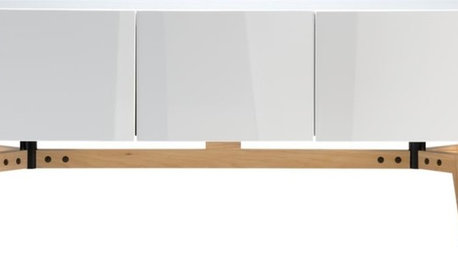
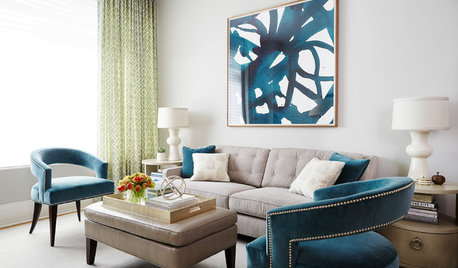
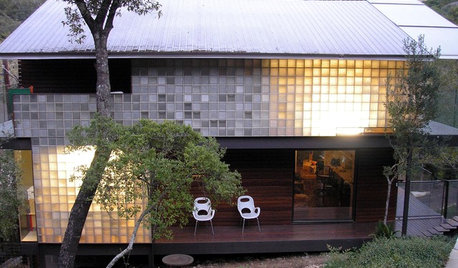

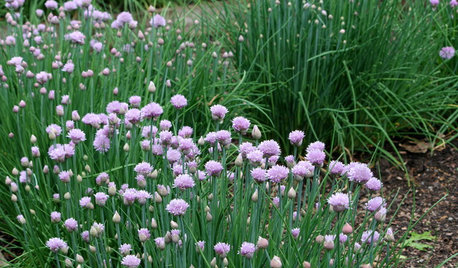


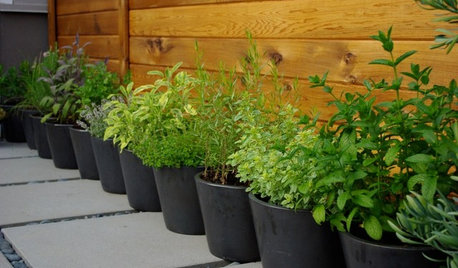
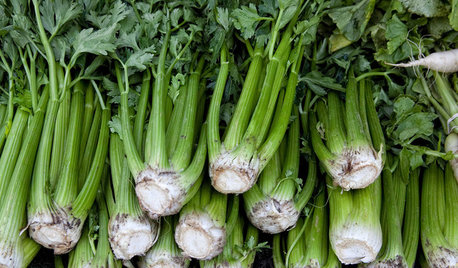







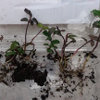
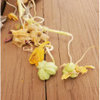
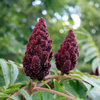
digdirt2